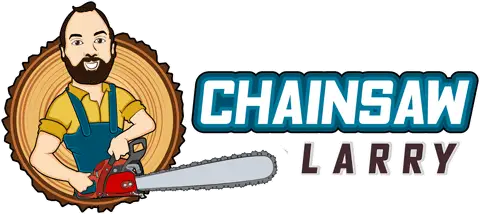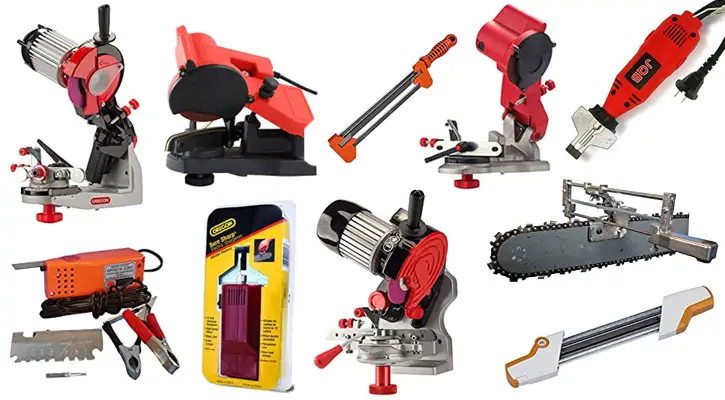Table of Contents
Are you looking for the best high quality chainsaw sharpener?
How about one that’s electric, portable, or manual?
If so, you’ve landed on the right page.
In this guide, I’ll show you how to find the best chainsaw sharpener for your needs and budget.
With the various types of sharpeners and files out there, it can be hard to know which one to pick.
So, I’ve create this all-inclusive guide to help you make the right choice.
Whether you’re looking for the top portable chainsaw sharpener, best manual chainsaw sharpener, electric bench sharpener, or file, this page has everything you need.
I can’t wait to help you find the best chain sharpener for your tool kit!
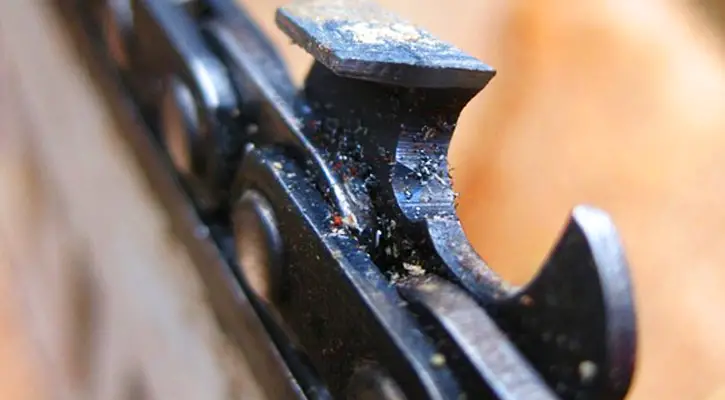
Best Chainsaw Sharpeners Reviewed in This Guide
Here’s a quick comparison chart showing the top chainsaw sharpeners. I’ll go in depth about each one later in the reviews section, but this gives you a sense of what’s available and a simple way to quickly compare them.
| Image | Details | Price |
|---|---|---|
 | Oregon 520-120 Electric Chainsaw Sharpener
| Check Price |
 | Oregon 410-120 Electric Chainsaw Sharpener
| Check Price |
 | Oregon 310-120 Electric Chainsaw Sharpener
| Check Price |
 | Buffalo Tools ECSS Electric Chainsaw Sharpener
| Check Price |
 | Oregon 30846 Handheld Portable Chainsaw Sharpener
| Check Price |
 | Granberg Grind-N-Joint Handheld Portable Chainsaw Sharpener
| Check Price |
 | Maida Handheld Chainsaw Sharpener
| Check Price |
 | Granberg Bar-Mount (G-106B) Manual Chainsaw Sharpener
| Check Price |
 | Stihl 2-in-1 Easy Chainsaw File 0.325"
| Check Price |
 | Husqvarna (653000035) Chainsaw File 3/16″
| Check Price |
How Does a Chainsaw Sharpener Work?
Before we jump into my chainsaw sharpener reviews, I wanted to explain how they work.
For those of you who are interested, this section is for you.
If you’re not, go ahead and skip to the next section on “Types of Chainsaw Sharpeners” or go directly to the list below it.
Through use, the teeth on your chainsaw chain will become dull or the edges of the teeth may get chipped or become smooth, which leads to the chain not cutting as well as it used to.
A chainsaw sharpener works by grinding down the chain’s teeth to bring back that sharp edge.
Keeping your chainsaw chain sharp will ensure that your cutting jobs get done faster and with more accuracy.
Using the best chainsaw sharpener not only makes the chain sharp, but it also extends the life of your chain.
If you’re looking to save yourself some money, then you’ll want to invest in an electric, portable, or manual chainsaw sharpener, as buying new chains every time your old one gets a dull can be incredibly expensive.
In fact, investing in a sharpener can save you between $20 and $30 every time you have to buy a new chain for your chainsaw.
And since you’ll own your chainsaw for life, those chain costs really add up.
That’s why every serious chainsaw user owns at least one kind of sharpener.
Types of Chainsaw Sharpeners
When it comes to chainsaw sharpeners, you have several different options to choose from.
Finding the right one will depend on three things:
- How much effort you want to put into the sharpening process
- How fast you want to get the chain sharp
- How much money you have to spend
While there are chainsaw sharpeners to fulfill everyone’s wants and needs and can fit into a wide range of budgets, there are two general categories that sharpeners fall into:
- Electric Chainsaw Sharpeners
- Manual Chainsaw Sharpeners
1. Electric Chainsaw Sharpeners
Electric chainsaw sharpeners need a power source to keep them running.
Some use a plug that goes into a standard wall outlet while others run on batteries.
However, it’s possible to find portable electric chainsaw sharpeners that can be attached to your vehicle’s battery, making them easy to use while working in the field.
Any of these options can be an efficient, fast way to sharpen your chain.
When you’re shopping for an electric chainsaw sharpener, you’ll find that they come in two types:
Electric Bench Sharpeners
These are probably the best type of chainsaw sharpener you can get. They’re designed to attach to a bench, table, or a wall in your garage or workshop, and they look and function similar to a metal grinder or vise.
They’re the best electric chainsaw sharpener because they’re an incredibly accurate tool that allows you to sharpen the chainsaw chain while it’s stationary, giving you more control.
To use a bench sharpener, you’ll set the chain securely in the clamp, adjust the angle of the grinder, turn on the motor, and then file the cutters on the chain.
Once you’re done with one section, you’ll turn off the motor, adjust the chain, and repeat the process until every cutter on the chain has been sharpened.
Electric Handheld Sharpeners
These sharpeners are portable and use a spinning disc to file down the cutters on the chainsaw chain. They’re equipped with a guide to ensure that you maintain an accurate and steady angle.
Since this device is handheld, it’s necessary that you control the speed and accuracy.
This sharpener is best for people who are comfortable taking on fine handwork tasks. If this describes you, then using this tool will be easy.
Using a handheld sharpener is slower than using an electric bench sharpener. But you can sharpen the chain while it’s still attached to your chainsaw, which can save you some time.
You also have the option of taking the chain off and putting in a vise.
It’s up to you to do whatever you’re most comfortable with.
2. Manual Chainsaw Sharpeners
As the name implies, a manual chainsaw sharpener has no electrical components at all.
They’re powered by your hand and body movements.
You’ll sometimes find these tools referred to as “chainsaw files”.
To use a manual chainsaw sharpener, you move the file across the guide in one direction. This sharpens the teeth one at a time.
You move from one cutter to the next until every cutter on the chainsaw chain has been sharpened.
As you can imagine, this is a slower way to sharpen your chainsaw chain, but it’s the most cost-effective and accurate.
When it comes to ensuring that you aren’t over-sharpening the cutters and causing damage, using a chainsaw file is a good option.
If you’re just getting into this practice, you might want to start with a manual sharpener until you know exactly how the cutters should look so that you don’t damage your chainsaw.
Another benefit of having a manual sharpener is that it can be taken with you in the field.
These are small and lightweight tools, which means you can throw them in your pack or into your tool belt.
If you’re doing a lot of work in the field and are away from an electrical source, having a manual chainsaw sharpener file will allow you to keep your chain sharp while you cut down trees and slicing up wood.
Even if you decide to get an electric chainsaw sharpener, it’s a good idea to have a manual sharpener one on hand, just in case.
You can use the manual tool while you’re actively working outside, which saves you time and allows you to sharpen your chain anywhere so that you can quickly get back to work.
Chainsaw Sharpener Reviews & Buying Guide
As you’ll see below, there’s a wide range of chainsaw chain sharpeners to choose from, but they aren’t all created equal.
So, I’ve put together this detailed list to help you find the best chainsaw sharpener for your wants, needs, and budget.
By choosing any one of these products below, you’ll not only save a lot of money in the long run, but you’ll also feel a sense of pride.
If you really enjoy taking care of your tools and making sure they function optimally, then sharpening your chainsaw chain with any of these options will be right up your alley.

Best Chainsaw Sharpeners List
1. Oregon 520-120 Best Electric Chainsaw Sharpener
If you’re looking for the best sharpener there is, you’ll want to check this one out.
With the ability to sharpen a wide range of chains, including 1/4, 3/8 low profile and full profile, 0.325, and 0.404 pitch chains, you’ll never need another sharpener.
This is an electric sharpener that attaches to a bench and has a self-centering chain vise and the ability to customize the handle position.
It’s light and is built to be used for high-volume sharpening.
So, if you do a lot of work with your chainsaw and want to keep the chain as sharp as possible, this is the best electric chainsaw sharpener you can buy.
2. Oregon 410-120 Electric Chainsaw Sharpener
If you only use your chainsaw occasionally but still want to use a high-quality electric sharpener to keep your chain sharp, then this is your next best choice.
The Oregon 410-120 model can be mounted either to a bench or a wall, and it is a bit less powerful than the 520-120 (lower amps and watts).
However, this electric sharpener does come with the three good grinding wheels that have the ability to sharpen 1/4, 3/8 low profile, 0.325, and 0.404 pitch chains.
3. Oregon 310-120 Electric Chainsaw Sharpener
If you’re just getting into chain sharpening and want a cheaper tool than my first two picks, then this is a good option to consider.
It’s the lowest end of the Oregon electric chain sharpeners but still does an excellent job at sharpening.
It’s also compact and can be connected to any bench or worktable.
It has the ability to sharpen chains that are 1/4, 3/8 low profile, 0.325, and 0.404 inches.
4. Buffalo Tools ECSS Electric Chainsaw Sharpener
This sharpener is another inexpensive tool that can get you started and comfortable with sharpening your chainsaw chain.
It can be mounted to a bench, wall, or vise, and adjusts to the most popular chain sizes.
It comes equipped with a 4 1/4 x 1/8-inch grinding wheel and 7/8-inch arbor.
This sharpener doesn’t have a lot of extras, but if you’re looking for a great entry-level tool that can help you become comfortable and experienced with chain sharpening, it may be the best choice for you.
5. Oregon 30846 Best Portable Chainsaw Sharpener
When it comes to portable chainsaw sharpeners that you can take with you into the field or use at the shop, this tool tops the charts.
It’s simple to use and has a 72-inch cord that attaches to a 12-volt battery to keep it running.
It has three sharpening stones: 3/16, 5/32, and 7/32 inch.
Plus, it includes a quick-adjust sharpening guide and built-in depth gauge to ensure all your cutters are uniform.
6. Granberg Grind-N-Joint Handheld Portable Chainsaw Sharpener
When it comes to handheld sharpeners, this is the next best portable chainsaw sharpener y ou can get.
All you have to do is connect it to a 12-volt battery and you have enough power to keep this tool running.
The nicest part is that you can sharpen the chain while it’s still attached to your chainsaw, which can save you time and effort, allowing you to get back to work as quickly as possible.
It features a 7/32-inch grinding stone and an E-Z gauge.
You can also adjust the sharpener to three angles: 25, 30, and 35 degrees.
And running at 22,000 RPM, you can sharpen your chain in no time at all.
7. Maida Handheld Chainsaw Sharpener
This is another good handheld chainsaw sharpener that can be used anywhere that has an electrical outlet.
It allows you to sharpen the chain without having to remove it from the chainsaw, and at 30,000 RPM, it gets the job done faster than my last pick.
It comes with three different grinding bits that can be used for 3/8, 0.325, and 0.404 inch chains.
It also has an angle plate to ensure that you’re getting the proper alignment.
You can also vary the grinding speed so that you can get your chainsaw chain as sharp as possible without oversharpening the cutters.
8. Granberg Bar-Mount (G-106B) Best Manual Chainsaw Sharpener
When it comes to manual chain sharpeners, this one may be the best manual chainsaw sharpener you can buy.
It can quickly and easily sharpen any chain, it mounts to any saw, and it can be used with any file size.
It’s also made of cast aluminum and zinc-plated steel, so you know it’s tough.
In my opinion, this file-n-joint sharpener is the top manual chainsaw sharpener the industry has to offer.
Designed more than 30 years ago, it has become the standard for durability and accuracy.
It features calibrated swivel guide markings that once set, will hold the right sharpening angles without slipping.
It also has features that allow you to set the file height and tooth length so it can be used on any chainsaw chain that’s out there.
If you want chainsaw teeth that are uniform and sharp, this is the tool to get.
9. Stihl 2-in-1 Best Chainsaw File 0.325 pitch
This manual chainsaw sharpener works for any tool equipped with a 0.325 pitch chain, and it’s one of the best chainsaw files out there and my personal favorite.
No matter what brand of chainsaw you own, as long as the chain is 0.325, you can use this sharpener.
This is a great chainsaw file for anyone who wants a quick tool to use in the field.
It takes up very little room in your pocket, pack, or tool belt and can sharpen your chain fast.
The best feature of this tool is the guide and flat file that files the depth gauge as you’re sharpening the blade. Making the whole sharpening process quick and easy.
This sharpener is now also available in a size for the 3/8 (.375) pitch chain and comes with 5/32 files and are generally for saws over 40 cc. The .325 pitch model comes with 3/16 files and are generally for saws from 20 cc to 40cc.
10. Husqvarna (653000035) Chainsaw File 3/16″
Should you own a chainsaw with a 3/16-inch chain, this is the best manual chainsaw sharpener available.
Again, no matter what brand your chainsaw is, this tool has what it takes to make the chain sharp.
It’s one of the best chainsaw files you can choose that gets the job done quick.
Plus, it’s incredibly light, compact, and can be taken with you wherever you go.
Additional Information on Chainsaw Sharpeners
The Sharpening Process
When it comes to sharpening a chainsaw chain, you’ll want to exercise caution.
The cutters may not be sharp now, but they’ll get there, and you don’t want to tear up your hands.
So, wearing heavy-duty chainsaw gloves is advised.
And you’ll also want to put on some eye protection as well. (See my chainsaw safety gear reviews if you don’t have safety glasses yet.)
If you’re sharpening the chain while it’s still attached to the chainsaw, make sure you engage the chain brake to secure the line.
It’s also a good idea to use a clamp to stabilize the nose bar.
Some electric chainsaw sharpeners come equipped with that feature, and it ensures that you can use both hands while sharpening the blade.
But, you can always take the chain off the blade too and just sharpener it that way with an electrical bench tool.
Once you’ve secured the chainsaw or chain, you’ll then move the file or grinder over the surface of the cutters.
You’ll know that you’ve made the teeth sharp because you will notice a silver gleam on the metal.
That shiny gleam is all you need to see to know it’s sharp.
Should you be using a manual sharpener, it will be easy to see when this gleam appears. If you’re using an electric sharpener, you’ll need to pay close attention to ensure that you don’t run the motor for too long.
Grinding down the cutters too far will make the chainsaw less accurate and could cause problems during use. It will also wear out your chain faster.
No matter which type of chainsaw sharpener you use (electric, portable, or manual), you need to ensure that you’re using the right angles and filing the cutters to the right depth.
If you don’t, this will make your chainsaw chain less effective and efficient.
Getting the Right Cutting Depth with a Depth Gauge
To ensure that your chainsaw chain cuts effectively, you have to make sure that all of the teeth are the same height or depth.
Taking the time to measure the cutting depth is imperative for the proper functioning of the chainsaw and to ensure your safety.
Practically all chainsaw sharpeners come with a depth gauge, but if they don’t, then it’s in your best interest to pick one up. This will help you adjust the height of your cutters.
When it comes to using the gauge, all you have to do is hold it up to your cutters to make sure they’re the correct height.
If any of them extend beyond the gauge, you’ll need to file them down to the proper height.
Common Questions About Chainsaw Sharpeners & Chains
How do you use a chainsaw sharpener?

When it comes to chainsaw sharpeners, these were designed to grind the teeth on your chainsaw chain to ensure that they’re sharp and uniform.
They accomplish this task by being set to the right angle and moving across the surface of the teeth.
It doesn’t matter if you use an electric sharpener or a manual one, they both work the same.
The biggest difference between the two is how long the sharpening process will take.
How much does a chainsaw sharpener cost?
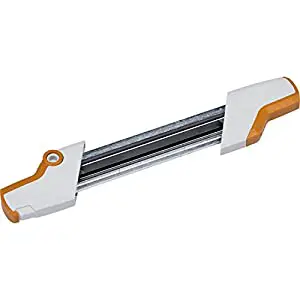
The price of a chainsaw sharpener depends on several factors, including whether you get an electric sharpener or a manual one.
As you can imagine, manual sharpeners are less expensive than their electric counterparts.
In general, you can find manual sharpeners for as little as $15.
When it comes to electric chainsaw sharpeners, you can find professional-grade tools that cost $300 or more.
On average, though, electric sharpeners range between $40 and $100, and these are high-quality tools that can sharpen and extend the life of your chainsaw chain.
What is the best degree to sharpen a chainsaw chain?
If you have a standard chainsaw chain, it’s generally sharpened at 20 to 25 degrees for crosscutting wood.
If you’re hoping to rip with the grain, you’ll want to sharpen the chain to 10 degrees.
You want to use your chain properly and get any job done quickly and efficiently, as well as ensure your safety, so it’s advised that you consult the chain’s specifications that are created by the manufacturer to determine the best degree to sharpen the chain.
These can usually be found on the package, but you might also be able to find this information online.
Why does my chainsaw chain get dull so fast?
There can be a variety of reasons why your chainsaw chain gets dull so fast.
It might because you’re putting too steep of an angle on the cutters, or perhaps your rakers are too far down.
It’s also possible that you’re cutting through dirty wood or maybe you’re accidentally touching the ground with the tip of the bar.
To find out exactly what the cause is, you might consider paying close attention to how you use your chainsaw while cutting wood.
Once you find the reason why your chain gets dull so fast, you can either find another chain that is better suited to your cutting style or you can change how you cut to ensure that your chain stays sharp for as long as possible.
How do you tell when a chainsaw chain is worn out?
When the chain becomes dull or worn out, it will give you some signs. These include the following:
- They’re Less Effective at Cutting — If your chainsaw chain is sharp, it will be able to cut through trees quickly and easily. The cuts will also be straight. If the chain has become dull, you’ll notice that the cuts will become uneven or crooked, and you’ll also have to apply pressure to get the tool through the tree.
- It’s Hard to Position the Chainsaw — If your chainsaw chain is dull, you will find it challenging to keep the tool in the proper position. It may also feel like it’s rattling or bouncing. It if gets to this point, it becomes a safety concern. To ensure that you’re safe while operating your chainsaw, it’s advised that you sharpen your chain.
- You Notice Smoke — Chainsaws are built to be tough, and they can withstand a lot of friction and won’t be damaged. Thus, if you know that the tool is lubricated properly and the chain’s tension is adjusted to the correct settings but you see smoke, then you need to be concerned. This is another sign that the chain is dull. The smoke is caused by too much friction heating up the chainsaw. Not only can this damage the tool, but it also creates a dangerous situation for you. Sharpening the chain will ensure the tool runs the way it should and will reduce the chances of damage or injury.
- You Notice Damaged Chain Teeth — If you happen to notice that there are missing or damaged teeth on your chainsaw chain, this is another sign that you need to sharpen the chain. You can still use the chain if there are a few teeth missing and the rest are sharp, but it’s a good idea to have a new chain on hand and ready to go. If more teeth wind up missing from the chain, this could cause a safety hazard, and it’s a risk you don’t want to take.
How many times can I sharpen a chainsaw chain?
Depending on how you use your chainsaw, the chain can generally be sharpened three to five times.
There is no predetermined lifespan of a chainsaw chain, and how long it lasts depends on how it’s used and maintained.
Should you use your chainsaw occasionally, the chain can last from 2 to 5 years if it’s kept well sharpened.
If you do a lot of cutting jobs throughout the year, then you may only get 2 or 3 months out of a chain before it needs to be replaced.
Can a chainsaw chain be put on backwards?
Believe it or not, but it’s possible to put a chainsaw chain on backwards.
If this occurs, it won’t cut.
Thus, if you’re using your chainsaw and it’s not cutting into the wood, double-check the chain.
You can tell the chain is on correctly because when you’re holding the chainsaw, the portion of the chain that cuts will face away from you and travel from the back of the chainsaw to the front.
Do chainsaw chains stretch?
Yes, it’s possible that while you’re using your chainsaw, the chain can stretch and become loose.
This is due to the rivets being pulled in one direction, making the chain loop longer.
The more you use the chain, the more the rivet clearance will increase, making the chain longer every time you use it.
This stretching happens slowly over time, but it’s steady and you’ll eventually notice the stretch.
How tight should you tighten a chainsaw chain?
To ensure that your chainsaw chain has the right tension, it should be a little loose on the guide bar but tight enough that you can’t pull the drive links away from the nose.
Chainsaw Buying Guides
Before I finish this guide on chainsaw sharpeners, I wanted to let you know that I have several popular chainsaw buying guides if you’re looking for a new power tool.
Take a look at these pages if you’re interested:
- 10 Best Chainsaw Reviews List
- Top Gas Chainsaw Reviews
- Top Battery Chainsaw Reviews
- Top Electric Chainsaw Reviews
- Best Chainsaws for Home Use
- Best Mini Chainsaws
Closing Thoughts on My Best Chainsaw Sharpener Reviews
If you reached this part of my guide, then you should feel confident buying the best chainsaw sharpener for your needs.
As you learned, there are a number of different types of sharpeners available to choose from.
I did my best to show you good options for portable chainsaw sharpeners, the best electric chainsaw sharpeners, the best manual chainsaw sharpeners, and the best chainsaw files.
Now, all you have to do is narrow down which of those tools reviewed above are right for you and your budget.
Happy sharpening!
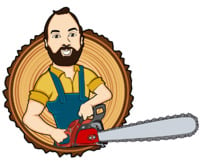
Your Pal,
Chainsaw Larry
